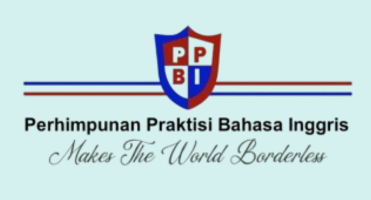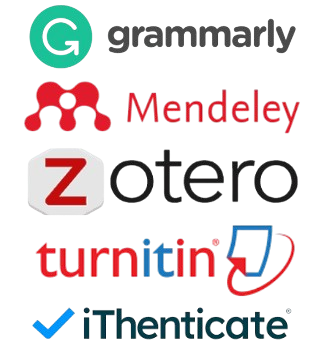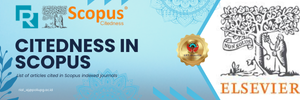Corpus Linguistics Today: A Qualitative Approach
DOI:
https://doi.org/10.31963/rial.v2i1.4486Keywords:
Corpus Linguistics, Qualitative Corpus Approach, Corpus TodayAbstract
Corpus linguistics, the study of language form and function using computerized corpora, involves collecting extensive electronic texts to analyze language usage. It serves various objectives: qualitative analysis, exploring nuances in language use, and quantitative analysis, identifying patterns in word usage and collocations. Corpus linguistics tracks language variation over time, aids language teaching, supports lexicography, and contributes to discourse analysis. Its evolution grew from the 1950s to the present day, marked by technological advancements and theoretical integration. The article underscores the significance of qualitative analysis in providing contextual insights into language use. The systematic creation of a corpus involves steps like text selection, data collection, preprocessing, annotation, and quality control. Various qualitative analysis techniques, from discourse analysis to lexical semantics, offer diverse perspectives for studying linguistic phenomena. This article provides a concise overview of corpus linguistics, its evolution, the importance of qualitative analysis, corpus creation, and qualitative analysis techniques.References
Absalom, M. (2021). Digital corpora: language teaching and learning in the age of big data. In Innovative language pedagogy report (pp. 97–101). Research-publishing.net. https://doi.org/10.14705/rpnet.2021.50.1242
Adamou, E. (2019). Corpus linguistic methods. In Handbücher zur Sprach- und Kommunikationswissenschaft / Handbooks of Linguistics and Communication Science (HSK) (pp. 638–653). De Gruyter. https://doi.org/10.1515/9783110435351-052
Ahsanuddin, M., Hanafi, Y., Basthomi, Y., Taufiqurrahman, F., Bukhori, H. A., Samodra, J., Widiati, U., & Wijayati, P. H. (2022). Building a corpus-based academic vocabulary list of four languages. Pegem Journal of Education and Instruction, 12(1), 159–167. https://doi.org/10.47750/pegegog.12.01.15
Aijmer, K., & Altenberg, B. (2014). English corpus linguistics. Routledge. https://doi.org/10.4324/9781315845890
Bennet, G. R. (2010). Using corpora in the language learning classroom: Corpus linguistics for teachers . Language Value, 2, 140–143.
Biber, D., Reppen, R., & Friginal, E. (2010). Research in corpus linguistics. In R. B. Kaplan (Ed.), The Oxford handbook of applied linguistics (2nd ed, pp. 548–570). Oxford University Press.
Cheng, W. (2013). Corpus-based linguistic approaches to critical discourse analysis. The Encyclopedia of Applied Linguistics, 1353–1360.
Cheng, W. (2014). Corpus analyses of professional discourse. In The Routledge handbook of language and professional communication (pp. 13–25). Routledge.
Conrad, S. (2004). Corpus variety: Corpus linguistics, language variation, and language teaching (pp. 67–85). https://doi.org/10.1075/scl.12.08con
Coxhead, A. (2018). Vocabulary and English for specific purposes research: Quantitative and qualitative perspectives (First Edit). Routledge.
Coxhead, A., & Nation, P. (2001). The Specialized Vocabulary of English for Academic Purposes. Cambridge University Press. https://doi.org/https://doi.org/10.1017/CBO9781139524766.020
Crawford, W. J., & Csomay, E. (2016). Doing corpus linguistics (First publ). Routledge.
Davis, K. A. (1995). Qualitative theory and methods in applied linguistics research. Tesol Quarterly, 29(3), 427–453.
Flowerdew, J. (2009). Corpora in language teaching. In The Handbook of Language Teaching (pp. 327–350). Wiley-Blackwell. https://doi.org/10.1002/9781444315783.ch19
Friginal, E. (2018). Corpus linguistics for English teachers: New tools, online resources, and classroom activities (First publ). Routledge.
Fuertes-Olivera, P. A. (2018). The routledge handbook of lexicography. Routledge.
Gavioli, L. (2005). Exploring Corpora for ESP Learning. John Benjamins Publishing Company.
Geeraerts, D. (2019). Lexical semantics. Cognitive Linguistics-A Survey of Linguistic Subfields, 15, 25.
Goźdź-Roszkowski, S. (2021). Corpus linguistics in legal discourse. International Journal for the Semiotics of Law - Revue Internationale de Sémiotique Juridique, 34(5), 1515–1540. https://doi.org/10.1007/s11196-021-09860-8
Hardt-Mautner, G. (1995). “Only Connectâ€. Critical Discourse Analysis and Corpus Linguistics. Citeseer.
Hasko, V. (2012). Qualitative corpus analysis. In The Encyclopedia of Applied Linguistics. Wiley. https://doi.org/10.1002/9781405198431.wbeal0974
Hoey, M., Mahlberg, M., Stubbs, M., & Teubert, W. (2007). Text, discourse and corpora: Theory and analysis. Continuum.
Hunston, S., & Su, H. (2019). Patterns, constructions, and local grammar: A case study of ‘evaluation.’ Applied Linguistics, 40(4), 567–593. https://doi.org/10.1093/applin/amx046
Illie, C., & Norrick, N. R. (2018). Pragmatics and its Interfaces. John Benjamins Publishing Company.
Jucker, A. H. (2013). Corpus pragmatics. Handbook of Pragmatics, 17, 1–18.
Kennedy, G. (1998). An introduction to corpus linguistics. Pearson Education Limited.
Kreuter, J., & Kreuter, J. (2021). The Tools for Empirical Analysis—The Method of Qualitative Content Analysis. Climate Engineering as an Instance of Politicization: Talking Tomorrow’s Technology—Framing Political Choice?, 165–186.
Lewandowska-Tomaszczyk, B. (2007). Cognitive corpus studies: A new qualitative & quantitative agenda for contrasting languages. MFU CONNEXION, 1(1), 1–26.
Ludeling, A., & Kyto, M. (n.d.). Corpus linguistics an international handbook (Vol. 2). Walter de Gruyter.
Mahlberg, M. (2014). Corpus linguistics and discourse analysis. Pragmatics of Discourse, 215–238.
Mahlberg, M. (2017). Corpus stylistics. In The Routledge handbook of stylistics (pp. 378–392). Routledge.
Mautner, G. (2009). Corpora and critical discourse analysis. Contemporary Corpus Linguistics, 32–46.
McCarthy, M., & O’Keeffe, A. (2010). Historical perspective what are corpora and how have they evolved? In A.
O’Keefe & M. McCarthy (Eds.), The Routledge handbook of corpus linguistics (pp. 3–13). Routledge.
Mcenery, T., & Hardie, A. (2012). Corpus Linguistics: Method, Theory and Practice. Cambridge University Press.
Mitkov, R. (2022). The Oxford handbook of computational linguistics. Oxford University Press.
Nation, P. (2016). Making and using word lists for language learning and testing. John Benjamins Publishing Company. https://doi.org/10.1075/z.208
O’Keeffe, A., & McCarthy, M. (2010). The Routledge Handbook of Corpus Linguistics (First Edition). Routledge. https://www.wgtn.ac.nz/lals/resources/paul-nations-resources/vocabulary-analysis-programs
O’Keeffe, A., McCarthy, M. J., & Carter, R. A. (2007). From Corpus to Classroom: language use and language teaching. Cambridge University Press.
Partington, A., Duguid, A., & Charlotte, T. (2013). Patterns and meanings in discourse. Theory and practice in corpus-assisted discourse studies (CADS). John Benjamins.
Partington, A., & Marchi, A. (2015). Using corpora in discourse analysis. In The Cambridge handbook of English corpus linguistics (Vol. 1, pp. 216–234). Cambridge University Press.
Poole, R. (2018). A guide to using corpora for English language learners. Edinburgh University Press Ltd.
Prasetya, E. P., Ekawati, A. D., Nugraha, D. S., Marzuq, A., & Darlis, T. S. (2020). Corpus linguistics, language corpora and language teaching . English Journal, 14(2), 75–83.
Rühlemann, C., & Clancy, B. (2018). Corpus linguistics and pragmatics. Pragmatics and Its Interfaces, 241–266.
Sinclair, J. (1991). Corpus, Concordance, Collocation (Describing). Oxford University Press.
Staples, S., & Fernández, J. (2019). Corpus linguistics approaches to L2 pragmatics research. The Routledge Handbook of Second Language Acquisition and Pragmatics, 241–254.
Taylor, C., & Marchi, A. (2018). Corpus approaches to discourse: A critical review (1st Edition). Routledge. https://doi.org/https://doi.org/10.4324/9781315179346
Timmis, I. (2015). Corpus linguistics for ELT (First publ). Routledge.
Tognini-Bonelli, E. (2010). Theoretical overview of the evolution of corpus linguistics. In A. O’Keefe & M. McCarthy (Eds.), The routledge handbook of corpus linguistics (pp. 14–27). Routledge.
Toriida, M.-C. (2016). Steps for creating a specialized corpus and developing an annotated frequency-based vocabulary list. TESL Canada Journal/Revue TESL Du Canada, 34(11), 87–105. https://doi.org/http://dx.doi.org/1018806/tesl.v34i1.1255
Vaismoradi, M., Jones, J., Turunen, H., & Snelgrove, S. (2016). Theme development in qualitative content analysis and thematic analysis.
Downloads
Additional Files
Published
Issue
Section
License
Copyright (c) 2024 Research and Innovation in Applied Linguistics [RIAL]

This work is licensed under a Creative Commons Attribution-ShareAlike 4.0 International License.
Authors who publish with this journal agree to the following terms:
Authors who submit article to this journal, agree to grant the copyright to Research and Innovation in Applied Linguistics (RIAL) under a Creative Commons Attribution License: Creative Commons Attribution-ShareAlike 4.0 International License.
![]()
For collaborative works, authors should ensure that they have secured the necessary permissions from co-authors to submit the manuscript and grant the rights outlined in this policy.
Archiving and Access:
RIAL upholds an open access policy, ensuring that articles are freely accessible to a global audience upon publication. Authors' work will be archived electronically, facilitating its long-term availability and visibility.









.png)


